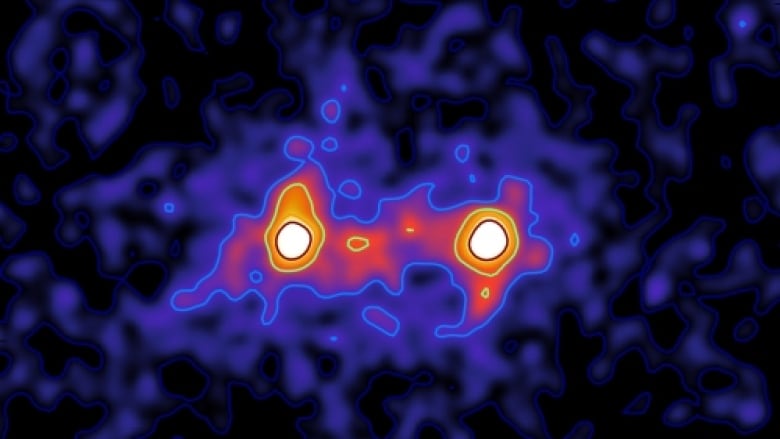Canadian researchers create first map of universe's dark matter
Elusive material makes up about 25% of our universe

Researchers at the University of Waterloo have created the first map showing howour universe's elusive dark matter interacts with galaxies.
Dark matter makes up about 25 per cent of our universe. However, it's invisible: its presence is only detectable through its gravity and how it interacts with galaxies.
- Latest search for dark matter comes up empty
- Are we living in a holographic universe? New study suggests it's possible
One way astronomers can "see" dark matter is through something called gravitational lensing. Because of its extreme gravity, dark matterbends light, in keeping withEinstein's theory of general relativity. This phenomenon isdepictedbelow in ananimation created withHubble Space Telescope imagery.
It's been theorized that galaxies are connectedthrough dark matter in a type of cosmic web.However, until now there hasnever been quantitative evidence.
Using the Canada-France-Hawaii Telescope, the researchers were able to detect the dark matter through weak gravitational lensing. This lensing effect only changes about one per cent of a galaxy's shape.
The image created is a composite using images from more than 23,000 pairs of galaxies located about 4.5 billion light-years away. What's seen is the bridge connecting galaxies.
"It's opening up essentially a new window to understanding where the darkmatter is in the universe and how much of it there is and how it's distributed in space," said Mike Hudson, co-author of the paper published in the Monthly Notices of the Royal Astronomical Society.
"This is a step forward in convincing us that, yes, it's really there," Hudson said.
The next step is to look at more galaxies that are farther away to get a better picture of how dark matter evolved over time.












_(720p).jpg)


 OFFICIAL HD MUSIC VIDEO.jpg)
.jpg)



























































































